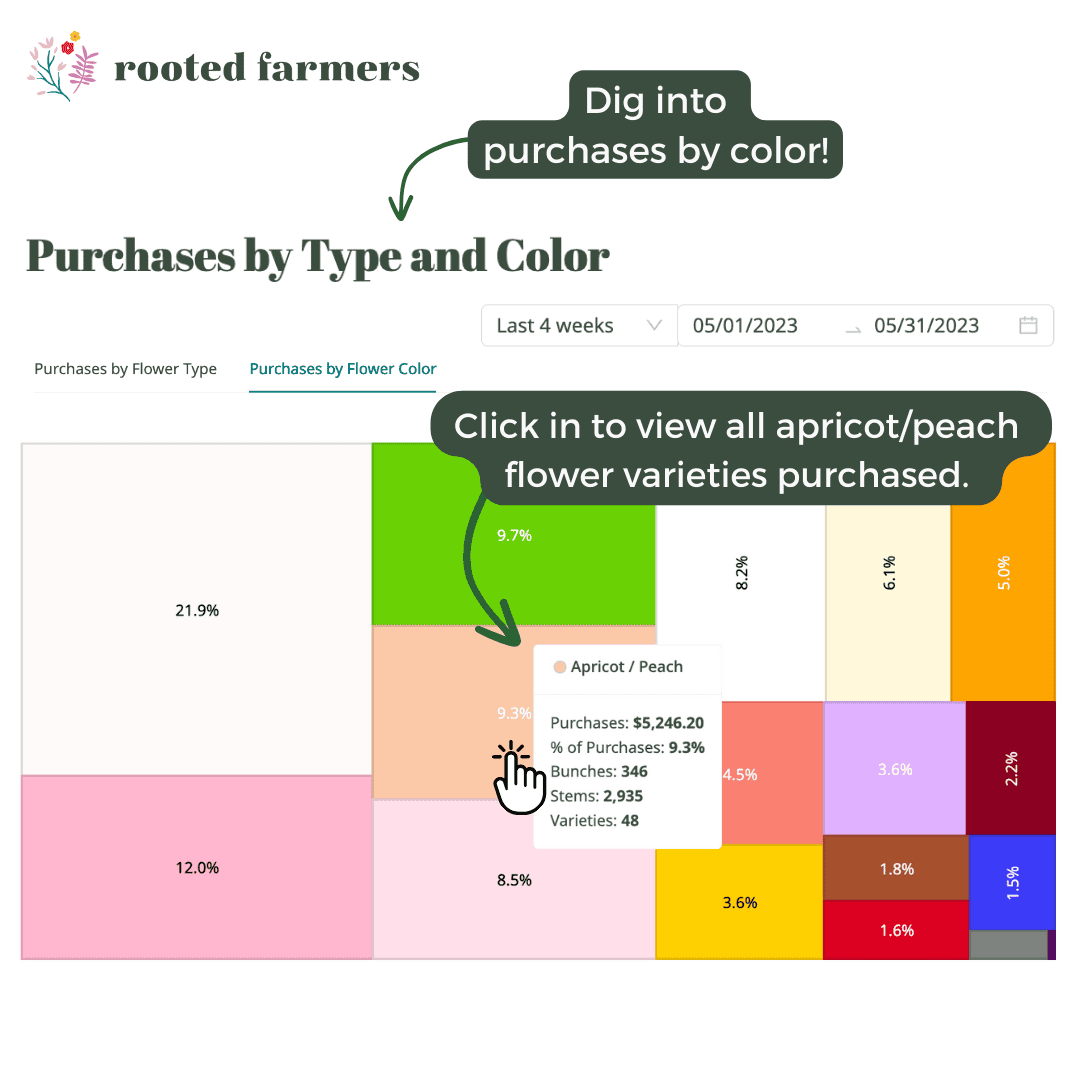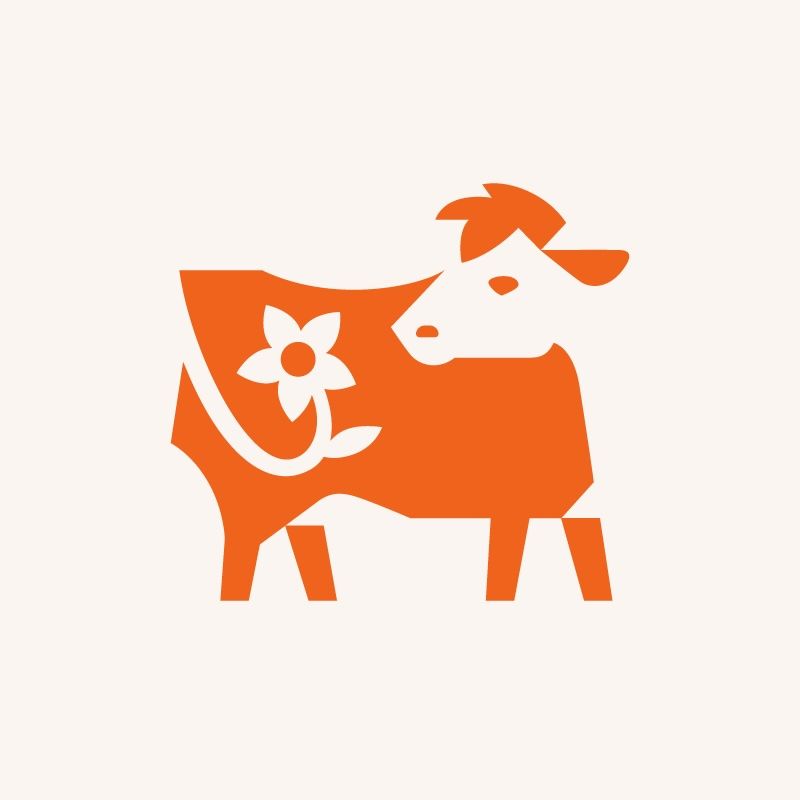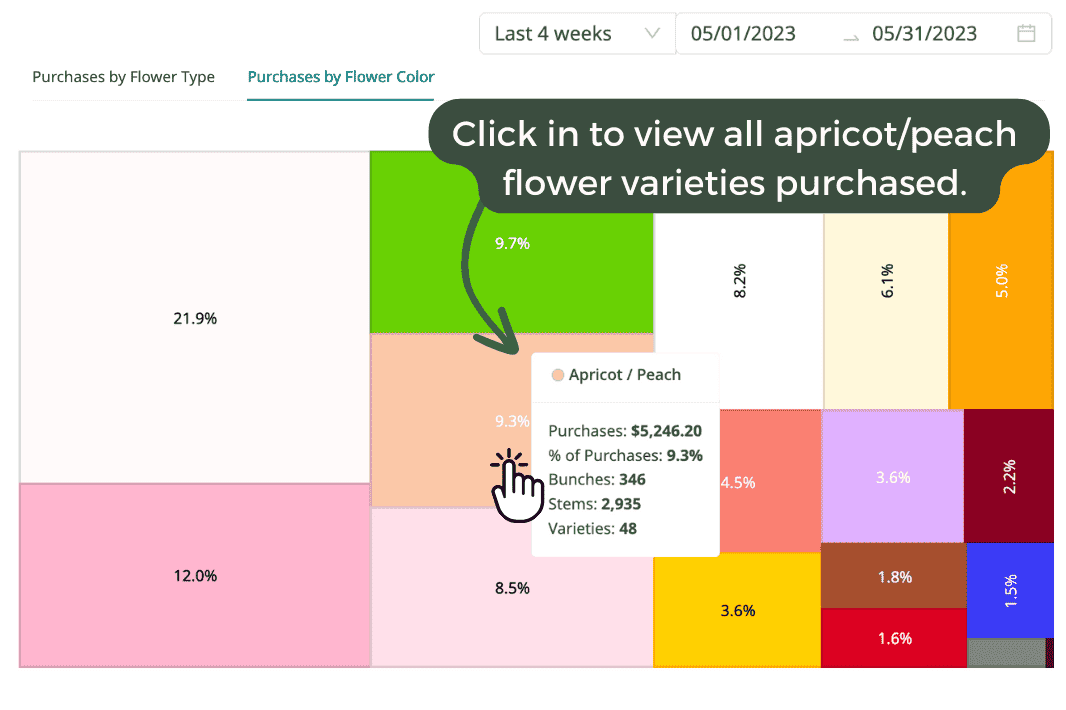Our new buyer analytics tool for wholesale buyers offers a valuable and in-depth way to understand your purchasing trends, plan for future events, and facilitate conversations with your local growers and collectives (best of all, this feature is free to all wholesale buyers on our site!)
There are several ways you can delve into this flexible tool to analyze past purchases and to help you plan for future events. Let's take an in-depth look at how powerful this tool can be – it’s something you'll want in your toolbelt next to those snips and zip ties!
Watch a quick video overview!

Overview Stats
At the top, you'll find your all-time stats: total purchases, number of orders, and the number of stems purchased. Below, you can set a date range to dive into a year, a quarter, or a month at a time and get a sense of your trends and purchasing habits. If you’ve purchased local flowers on Rooted over a few years, you can set the date filter to “all time” to compare the years.
Review Purchases by Flowers
Curious about your top 5, 10, or 20 purchased flowers? The answers might surprise you! You can adjust both the date range and the number of flower genera displayed on the pie chart.
Pro-tip: Hover over each slice to get a quick overview of data for that flower type!

As someone who loves diving into data, the new flower analytics tool is pure gold!
Being able to drill down into a specific timeframe and effortlessly identify the varieties and colors I used in the previous year is incredibly valuable when I’m in the design, planning, and proposal process for future events.
Below the pie chart, you'll see a table with more details, including stems purchased, bunches purchased, and what percentage of that flower genus comprises the total purchased for the date range selected.
Dig even deeper by clicking any of the genera to see all the varieties within that flower genus! Maybe you weren’t surprised by the amount of ranunculus you purchased (we love a good ‘nunc!), but having the breakdown of the varieties might surprise you!
Use the data and charts to help you plan for future events! For example: imagine it’s January, and you are writing a proposal for a September 15th wedding. You're trying to remember what is generally in season during this time to provide examples of potential flowers for the event. You can set your dates for September 8 - September 22 by using the arrows to toggle between the months. (It’s best practice to give a 1-2 week buffer around the date of your upcoming event to account for seasonal shifts and weather for local product.) Once your dates have been selected, dive into the pie chart and table to explore what flowers and varieties you previously purchased.
Dive into Purchases by Color
Do you think in color before you think of specific varieties when you are planning and proposal writing? We’ve got you covered. Continuing with the September wedding scenario, click over to the “Purchases by Flower Color” tab to see a graph showing the proportions of colors you purchased. Just like the “Purchases by Flower Type” tab, you can explore each color to find all the flowers that match that color!

Rooted has these new buyer analytics that I personally will depend on. I don't know about you, but I can't remember what I did yesterday! So I cannot remember what I ordered in what shade of burgundy last June ... but these analytics can remember that.
You can also use these tools to initiate conversations with your local growers and hubs. Providing growers with an idea of colors and varieties you will be looking for during the early winter months can be incredibly helpful as they are crop planning for the following season. Local growers know their product best, and can offer neat substitutes and new textures and blooms within your color palette.
Related: See this article for seasonal flowers by color palette and this handy guide to local substitutions for commonly imported flowers!
Categories

About the Author
Rooted Farmers
The Rooted Farmers Team is happy to bring you content that we hope provides value. The topics covered range from farming and running a hub, to sales, marketing, and all things related to building your business, to the unique challenges faced by growers. Our philosophy in sharing this content is that we are always in a position to learn; embracing this mentality will only help us to grow, both within our businesses and personally. If there is a topic that you feel would be of value to the Rooted Farmers community, we encourage you to share your ideas with us by sending an email to: reachout@rootedfarmers.com
